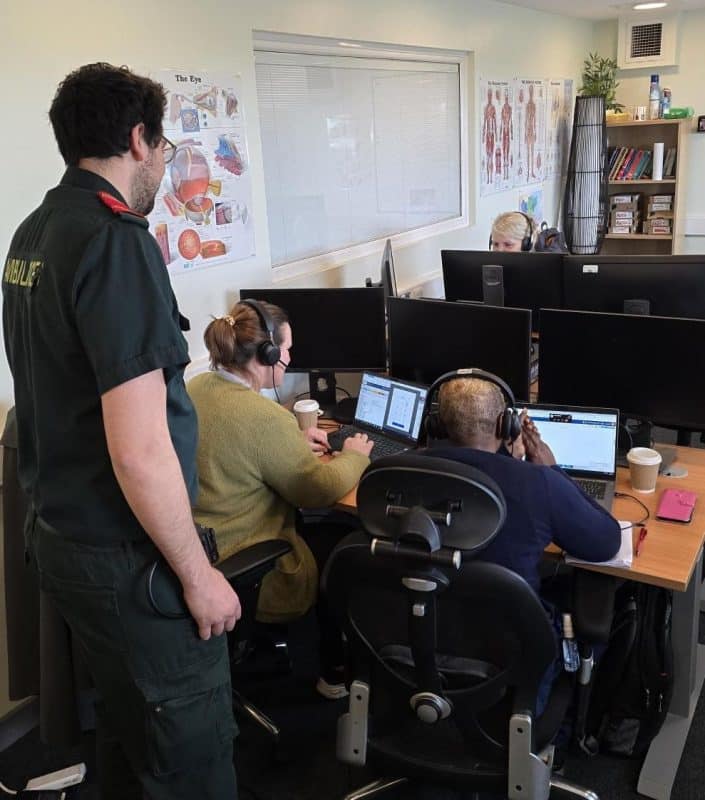 A clinical co-ordination hub organised and implemented by South East Coast Ambulance Service NHS Foundation Trust, (SECAmb), in partnership with East Kent Hospitals staff at the Queen Elizabeth The Queen Mother Hospital in Margate is delivering positive early results.
A clinical co-ordination hub organised and implemented by South East Coast Ambulance Service NHS Foundation Trust, (SECAmb), in partnership with East Kent Hospitals staff at the Queen Elizabeth The Queen Mother Hospital in Margate is delivering positive early results.
The hub, based at SECAmb’s Thanet Make Ready Centre, in Ramsgate, follows trials established at the Trust’s Paddock Wood and Ashford operational sites.
The Thanet hub, established in February 2024, involves multi-discipline teams from across the Kent healthcare system, joining SECAmb Advanced Paramedic Practitioners to help ensure 999 calls made in the Thanet area receive the most appropriate response and care.
By reviewing 999 calls, the hubs are helping to reduce pressure on A&E by guiding patients to the most suitable service and supporting ambulance crews at the scene of an incident.
In the eight weeks since the Thanet clinical hub began operations, it has triaged more than 300 patients, which in turn avoided admission to A&E, with most of these being discharged at the scene for further community input.
Joshua Byrne-Smith, SECAmb Practice Development Lead, said: "We have long aspired of working more closely with our external system partners and the ongoing relationship with the Complex Acute Response Team (C-Art) and the Canterbury Frailty Team has provided key opportunities to support our patients, while ensuring we are providing the correct care.
“The success of our other hubs was pivotal in allowing the roll out to continue to Thanet. Since its set up, the team has grown in understanding of what our community partners can provide, and collaboratively, they work together to ensure the right care gets to the right patient at the right time."
Dr Jacqueline Gilbert, a consultant geriatrician specialising in frailty at QEQM, said: “The Thanet hub has provided expert advice and liaison, ensuring our patients get the right care in the right place, first time. In addition to accessing care in the community, the hub facilitates direct access to Same Day Emergency Care (SDEC) and the frailty assessment unit (FAU), avoiding the need to go through the Emergency Department (ED). This has greatly relieved ED pressures and wait times and provides a much more positive experience for our patients.”
